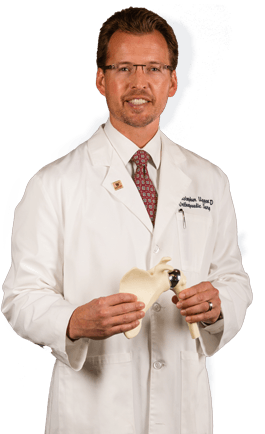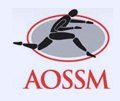Partial Meniscectomy
Partial meniscectomy is a surgical procedure indicated in individuals with torn meniscus where non-surgical treatments have failed to relieve the pain and other symptoms. Partial meniscectomy is recommended based on the ability of meniscus to heal, patient’s age, health status and activity level.
Menisci are two C-shaped pieces of cartilage located between thighbone and shin bone that act as shock absorbers and cushion the joints. The meniscus distributes the body weight uniformly across the joint and avoids the pressure on any one part of the joint and development of arthritis. The meniscus is prone to wear and tear and meniscal tear is one of the common knee injuries. Meniscal tear may occur in people of all ages and is more common in individuals who play contact sports.
Meniscal tears may be of different types such as longitudinal, parrot-beak, flap, bucket handle, and mixed/complex tear. Sudden twist, squat, or tackle may be the cause for meniscal tear in adults and aging may cause the tear in elderly individuals, as seen in combination with osteoarthritis. Meniscal tear may cause severe pain, stiffness and swelling, catching or locking of the knee, and may limit the movement. Meniscal tear is often diagnosed with a description the symptoms and imaging techniques such as X-rays or magnetic resonance imaging scans.
Non-surgical treatments for meniscal tear include R.I.C.E (Rest, Ice, Compression, and Elevation) and use of nonsteroidal anti-inflammatory medications. Surgery is recommended in cases where symptoms persist in spite of non-surgical treatments and is usually performed arthroscopically. Depending on the extent of tear, your surgeon will decide on whether to perform total meniscectomy (complete removal of torn meniscus) or partial meniscectomy (unstable meniscal fragments are removed and intact tissue is left in place and the edges are smoothened. Your surgeon may also order a rehabilitation program following the surgery for better and quicker recovery.
Arthroscopic Meniscectomy
The arthroscope is a small fiber-optic viewing instrument made up of a tiny lens, light source and video camera. The surgical instruments used in arthroscopic surgery are very small (only 3 or 4 mm in diameter), but appear much larger when viewed through an arthroscope.
The television camera attached to the arthroscope displays the image of the joint on a television screen, allowing the surgeon to look throughout the knee at cartilage and ligaments, and under the kneecap.
Then, the surgeon makes two small incisions (about 1/4 of an inch), around the knee joint area. Each incision is called a portal. In one portal, the arthroscope is inserted to view the knee joint. Along with the arthroscope, a sterile solution is pumped into the joint which expands the viewing area, giving the surgeon a clear view and room to work. The other portal is used for the insertion of tiny surgical instruments.
With the images from the arthroscope as a guide, your surgeon can look at the menisci and confirm the type, location, and extent of the tear. Once your surgeon has located the meniscal tear, surgical instruments are inserted into the portals to repair or partially resect the torn meniscus.
Recovery is usually 4-6 weeks back to full activities after partial meniscectomy and 3-6 months back to full activities after meniscus repair.













